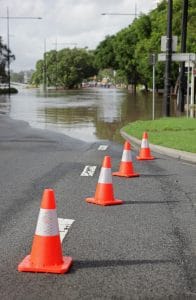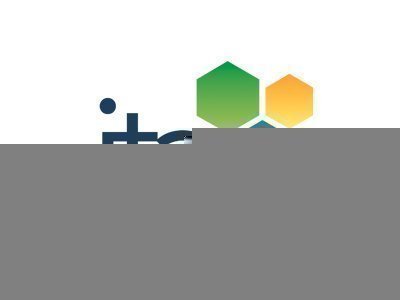Extreme Weather Conditions and the Invisible Dangers of Water Damage
 After an extreme weather event, it is difficult to know where to start the clean-up. The feeling of being overwhelmed can make it hard to digest conflicting information, much of which is incomplete and can leave you exposed to unforeseen risks.
After an extreme weather event, it is difficult to know where to start the clean-up. The feeling of being overwhelmed can make it hard to digest conflicting information, much of which is incomplete and can leave you exposed to unforeseen risks.
Getting the right advice
The Victorian Government and others provide great information on dangers from exposed electrics and other physical hazards, however accurate up to date information on the dangers from pollutants after water enters a property, is much harder to come by.
Unfortunately, some organisations provide incorrect advice and promote products that have not been scientifically proven. Many of the products and treatments for mould removal or prevention on the market today, for example, are not tested under controlled conditions. They also may not take into account more cost-effective and simple solutions to recovery from water damage. Understanding the correct clothing and personal protection needed when dealing with water damage is also important in keeping safe.
Dangers of water damage:
- Mould Growth: When water enters a building, porous materials become wet and damaged, instigating mould growth that is potentially harmful to health, and rotting building materials. Building materials that have been exposed to moisture can become mouldy within 48 hours if action is not taken to properly dry or remove the material.
- Sewerage Contamination: Flood water from ground level and below is termed “black water” as it will often contain sewage. Handling of materials that have come into contact with black water requires special personal protection and management.
- Chemical Leakage: Chemical contamination can occur from spillage of everyday products such as gardening and cleaning products. Household oils, grease, petrol, diesel, and bleach, or work-related chemicals such as those used in manufacturing, can pose serious health hazards. If a fire has broken out, chemical residues may remain in the property as a result of the fire, or the fire suppressant used.
- Asbestos and Lead Paint Exposure: Although trapped water and the potential for mould growth may necessitate removal of building structures, care must be taken not to remove building material without knowing if the wall contains or hides asbestos. Sanding of gloss paint that may contain lead is another significant hazard that was previously safely locked away in a solid seal.
- Unsupervised DIY Repair Work: Unsupervised removal or repair work on water-damaged buildings can expose you to dangers you are oblivious to, even after the water has subsided.
Toxic hidden hazards
Perhaps the most concerning aspect of water damage is that it can often be invisible to the naked eye, even while it causes serious issues for indoor air quality and, therefore, physical health.
Mould grows so rapidly on porous materials that even unexpected culprits such as furniture, carpets, toys, clothing and books can hide hazardous mould growth. The usual suspects such as walls and ceilings can also become infested with mould, long before it is visible to the naked eye.
Airborne pathogens can often hide in inaccessible places like computer keypads and other electronics. Specialised cleaning may need to be done on these objects if they have been sitting in a flooded building, whether or not they have had any direct contact with water.
Need a helping hand?
JTA Health Safety & Noise have a team who are experts in managing health risks from pollutants after flooding. We offer independence from companies providing clean-up and restoration services. We provide solid advice, indoor air quality testing and building inspections to uncover hidden health dangers that may be lurking in water damaged buildings.
Below is an example of how we work with our clients to ensure the safety of their employees and compliance to relevant state legislation.
Client Case Study: Indoor Air Quality Assessment and Building Inspection at the Shelford Girls Grammar School Early Learning Centre
The problem:
JTA Health, Safety, & Noise Specialists were engaged to identify an effective safety strategy for the Shelford Girls Grammar School Early Learning Centre. This included a check on indoor air quality, including the potential for hidden mould growth.
The solution:
One of JTA’s OHS consultants visited the site, assessed all policies, procedures and systems relating to safety and conducted an OHS compliance audit. This audit was thorough and exact, taking into account all relevant legislation.
How JTA solved the problem:
-
-
- JTA carried out a detailed investigation using a thermal imaging camera, moisture meter and bio-pump to collect air samples
- To ensure peace of mind, JTA delivered a tailored 1 hour Q & A on water damage and mould awareness
- A detailed moisture map was prepared by JTA and provided to the builders to ensure only the areas affected by mould growth were being replaced. This saved Shelford Girls Grammar School on unnecessary building costs
- With JTA’s in-depth and collaborative approach, we developed a thorough understanding of the issues affecting the Shelford Girls Grammar School so that safety could be pro-actively addressed
-
-
-
- Reduced legal risk and protection of students and staff members from mould and other airborne pathogens
- Minimised maintenance costs by conducting a thorough investigation with the latest monitoring equipment
- Peace of mind for parents and teachers in respect to the children’s safety
- Greater understanding of the health risks associated with mould growth
-
It is important that you use all the information you can to stay safe from unforeseen hazards to your health, your employees, and your business after the trauma of a flood. JTA’s specialised team can help reduce legislation headaches and take some of the weight off your shoulders at a difficult time, so if you need expert assistance, please contact us.









